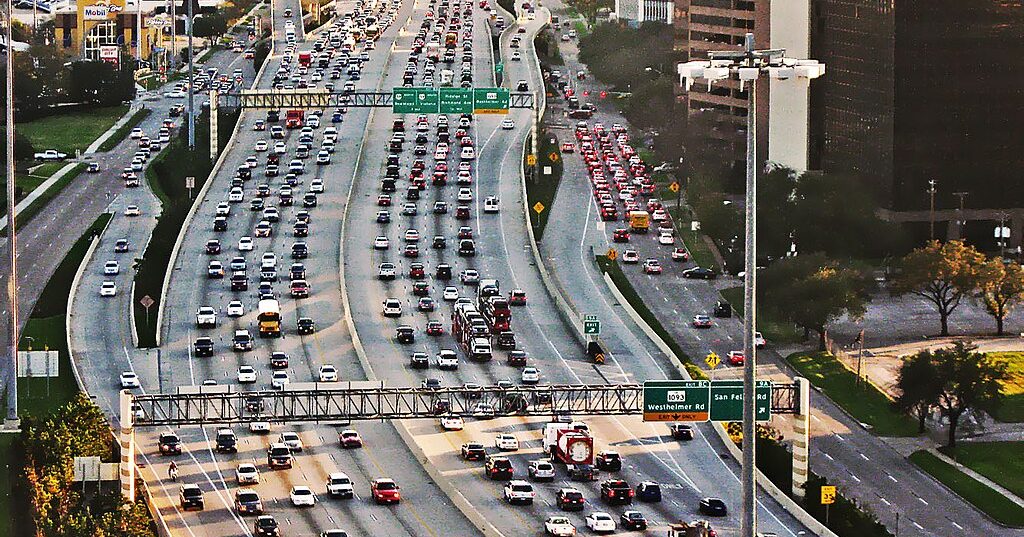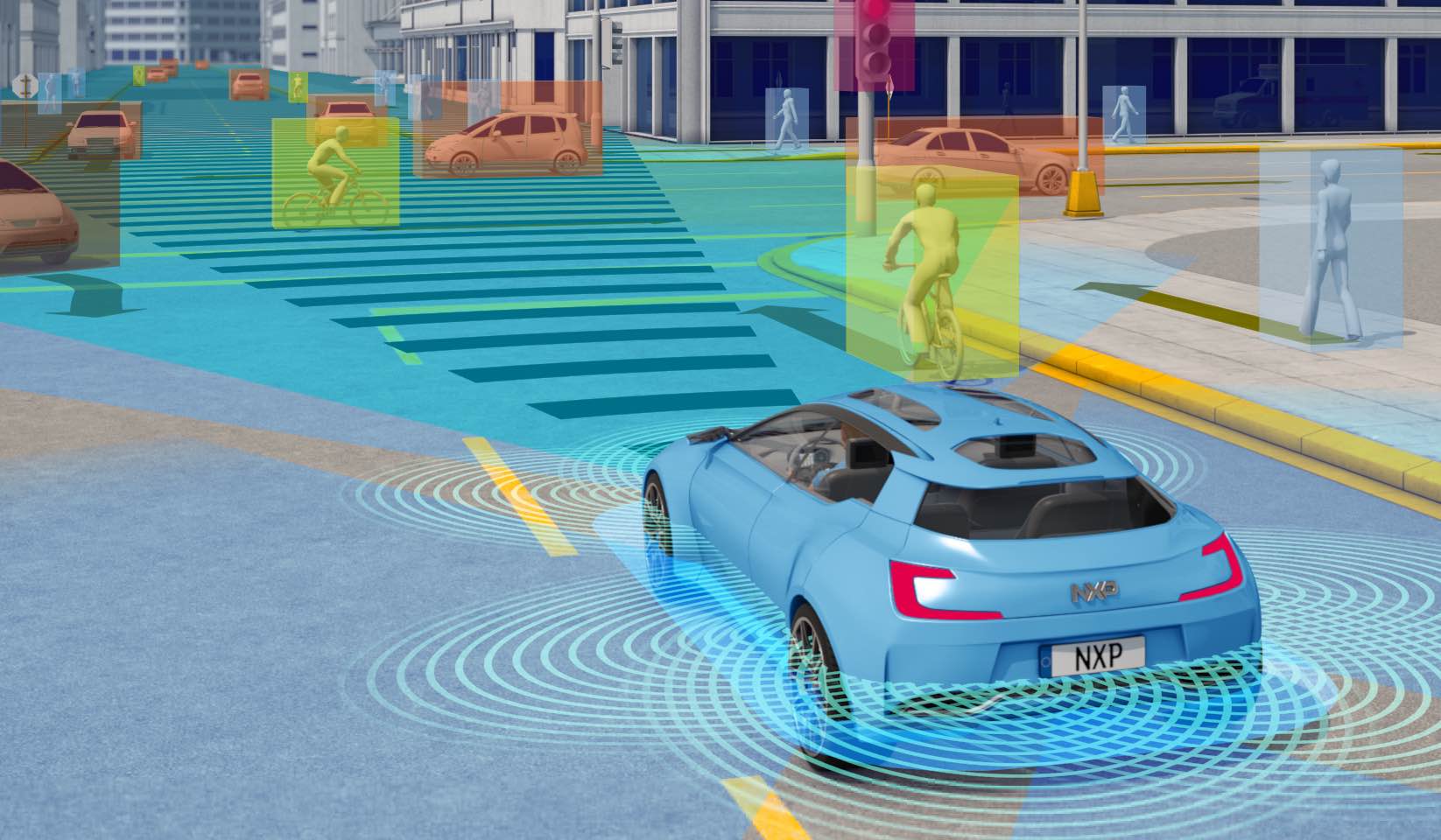To stay up to date with our ongoing coverage of the next surface transportation reauthorization bill, bookmark our Reauthorization page.
Federal lawmakers have begun the process of passing our nation's most important transportation bill — and advocates need to buckle up now for the long haul to make their voices heard.
As of last week, both branches of Congress have held hearings about the next surface transportation reauthorization, which is a wonky name for a colossally important process: passing the next bill that will extend or create the vast majority of our federal transportation programs at ground level. That same bill will also decide how the money will be divided up, and regulate how agencies at all levels of government will be allowed to spend it — and how they can't.
The current bill that governs those crucial decisions — the Infrastructure Investment and Jobs Act, which is more commonly referred to as the Bipartisan Infrastructure Law or BIL — will expire in September 2026, and advocates widely expect it to be renewed for at least a year while a divided Congress continues to spar over the bill that will replace it.
Still, federal watchdogs say that stakeholders who want a say in the next bill making their case right now — in part because they know Washington is gearing up to propose parts of that legislation as soon as this fall.
"We're early, but discussions are happening," said Corrigan Salerno of Transportation for America, which offers an excellent 101-level guide to the reauthorization process.
Setting the stage: The failures of the BIL
Salerno points out that unlike many committees on the Hill, the House Transportation and Infrastructure Committee appears to be coming together on a bipartisan basis to push the next transportation bill forward — despite broader polarization in Washington that has made passing any legislation a tall order.
That eagerness is at least partly inspired by the contentious implementation of the last transportation bill, which Salerno said some members of Congress felt was rolled out too slowly, allowing inflation to erode the law's once-historic purchasing power. And some argue that was true even before President Trump froze many of the Bipartisan Infrastructure Law's core programs and began hunting for grants to rescind or claw back for violating new executive orders against DEIA and sustainability.
"I think a lot of Congress is not too jazzed about the experience of implementing the infrastructure law under the Biden administration — and the outcomes, I think, have frustrated a lot of representatives," Salerno added. "You've seen people get very frustrated with deployment of new programs like [the National Electric Vehicle Charging Infrastructure program] and other efforts to accomplish specific goals [like sustainability, equity, and safety]. ... Those programs are much slower to spin up, and the state DOTs are not as excited to defend them compared to what us as advocates would like."
Many transportation reform advocates, meanwhile, also aren't that happy with the implementation of the last surface transportation law — because they thought it set America on a bad course from day one by creating conditions that all but guaranteed cars would continue to dominate U.S. roads.
Salerno explains that nearly 70 percent of funding in the Bipartisan Infrastructure Law went directly to state DOTs in the form of largely unrestricted "formula" grants — which states, in turn, mostly used to expand and resurface highways. The roughly 30 percent of "discretionary" funding that remained in the bill, meanwhile, did fund a broad swath of biking, walking, and transit projects when the Biden administration was picking the projects, but many of those programs are likely to be repurposed to serve autocentric needs now that the White House has changed hands.
Perhaps the biggest criticism of the Bipartisan Infrastructure Law, though, is that no one at any level of government is truly held accountable when projects the federal government funds generate bad results for society, like increased emissions, increased road deaths, increased environmental racism, the destruction of low-income communities to make way for highways, or even failure to cut the congestion that highway expansions are theoretically supposed to cure. And so states just keep building more of the same bad projects.
"We need to recognize that the bill that has gotten us to this predicament is fundamentally flawed," added Salerno. "The Bipartisan Infrastructure Law — and all of the transportation laws that came before it — have not set us on the right track for good outcomes. We are advocating for new approaches to fix those underlying flaws in the program that lead us to more congestion, more emissions, more deaths, and a more expensive system."
What's happening now
Now, advocates on all sides of the transportation reform conversation are working unusually hard to make their priorities for the next voices heard – including those who are fighting to maintain a car-focused status quo.
And that means a whole lot of white papers.
The influential American Association of State Highway Transportation officials, for instance, released a two-page briefing last week calling on Congress to prioritize formula funding for states over discretionary grants, to adjust those formula grant dollars up for inflation, to give states even more flexibility over how they spend federal money than they already have, and to "simplify" (read: scale back) federal environmental reviews, as well as expanding support for "technology," which likely refers to AVs and connected vehicle infrastructure.
Salerno says that means, in essence, that state DOTs are offering up discretionary grant programs in exchange for stable formula dollars and more state control over how they're spent. The lower levels of government that could apply directly for many of those discretionary grants, meanwhile, might get left out in the cold.
"Grants that go down to regional governments, counties, cities, and towns — those grants are not a priority for state DOTs right now," Salerno added. "They understand that there's a very conservative Congress at the helm, and they think that top-line funding levels are likely to go down. It would be a win for them if they stayed the same, but [since] there's an urge to cut, they want to point towards the discretionary grant programs: the climate programs, the walking, biking, and electrification programs."

Some transportation reform advocates, meanwhile, are hesitant to expend too much energy defending discretionary programs in the next reauthorization, either — at least as long as they're being dwarfed by largely unregulated formula dollars that are actively erasing progress. Instead, they'd like to see formula programs subject to more requirements that will naturally shift funds towards other modes and better uses.
"It's still an issue with the accountability of the states," Salerno added. "We still need more guardrails to ensure that the investments that we are making are not making emissions, congestion, safety, equity, and even economic outcomes worse. And we don't think that the current program is something that, if you feed more money into it, you'll get better results."
Instead, Salerno says Transportation for America is focused on increasing oversight on how states are allowed to spend all federal transportation money, rather than just pumping up any of the small discretionary programs meant to curb the damage that formula dollars tend to cause. And they want that oversight to be guided by three core principles: safety over speed, fix it first, and invest in the rest, which is to say, everything besides cars.
Those who want to be a part of that advocacy, meanwhile, should take that message to the congresspeople who will eventually vote on the next reauthorization bill, as well as anyone else in their community who they could convince to demand better.
"This reauthorization is probably going to be a bit less focused on total top-line funding numbers; there will be more room for discussion about policy," he added. "That's really where our focus is right now."






